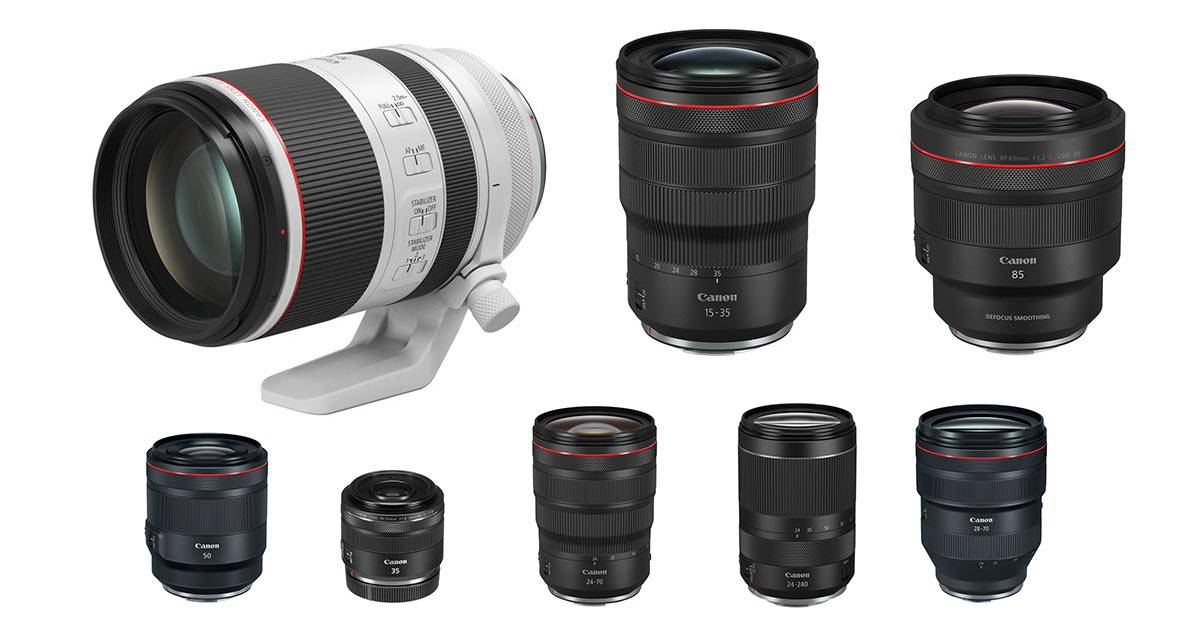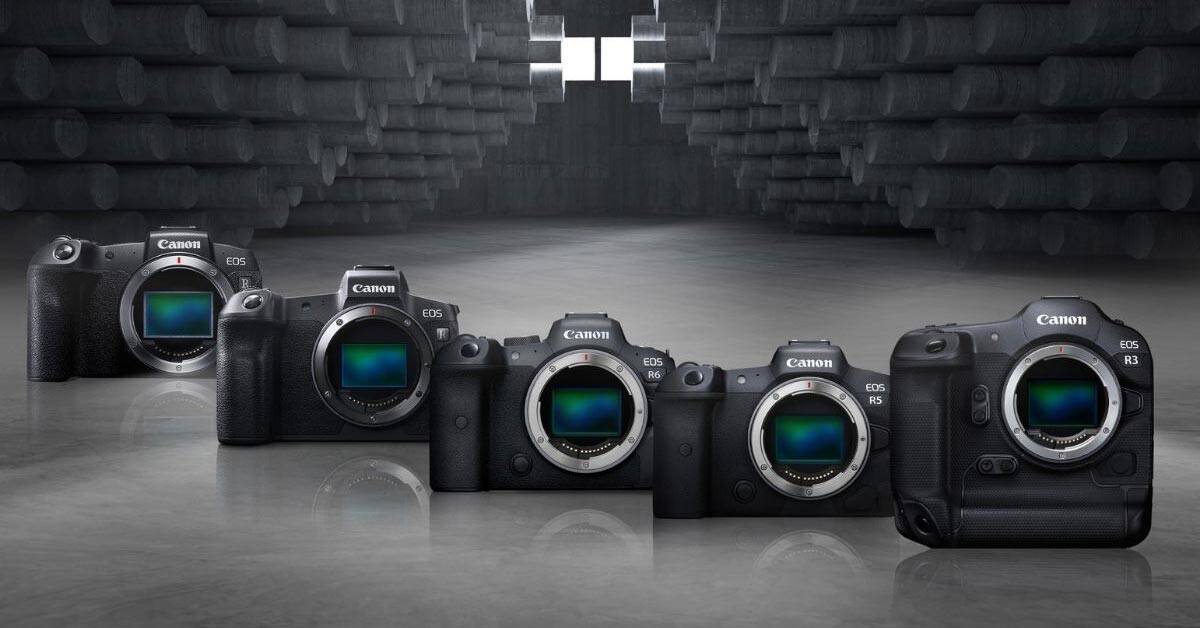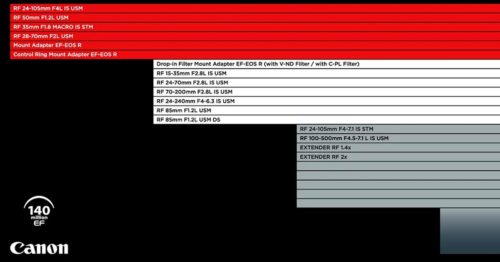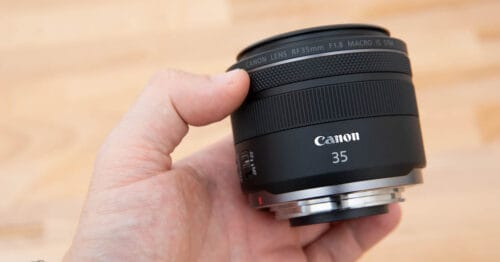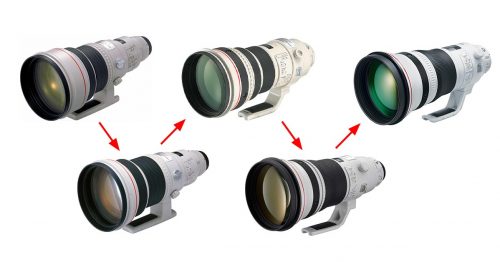Canon has continued to expand its RF lens lineup with a new Canon RF 800mm f/5.6 L IS and a 1200mm f/8 L IS. Initially, the sound of those specifications got me excited. Who doesn’t love a good “Big White” lens? Canon’s super-telephoto lenses have long been the stuff of dreams for many photographers. Although I have now owned several for my own business, it usually doesn’t stop me from daydreaming about more. There is something special about using these large precision optics, and I typically love to see Canon’s latest innovations in the field of lens design.
Upon seeing the headlines, I hurriedly jumped into these two new lenses’ specifications and photo galleries, and immediately my excitement changed to puzzlement. Why do they look so weird? Why do they look so much like existing Canon super-telephoto lenses in other focal lengths? And why do they cost up to $20,000!
It immediately became clear that Canon had simply recycled the RF 400mm f/2.8 L IS and RF 600mm f/4 L IS lenses and added a built-in 2x teleconverter to the bizarre-looking tube that extends off the back of the lens. I found confirmation after a little more digging on the Canon Asia website. From Canon: “the resemblance isn’t just in the exterior—the longer lenses build on the optical design of the latter two lenses, adding magnification optics to the rear to double the focal lengths”.
If Canon has added a 2x teleconverter into the rear of the lens, why are they charging $5000 more for the RF 800mm than the RF 400mm? And why $7000 more for the RF 1200mm than the RF 600mm? On their own, these numbers don’t make much sense. But considering that this built-in “doubler” added to both lenses is likely the same in both the 800mm and the 1200mm, why has it cost $2000 more in the latter for the same pieces of glass? If they are just going to add a built-in doubler, why not give it an on/off switch of a similar type to that seen in Nikon’s new Z 400mm f/2.8, or Canon’s EF 200-400mm?
Perhaps, I thought, these new “magnification optics” are incredible? Maybe they magnificently outperform regular 2x teleconverters to the point where these high prices are justifiable. Then I found the MTF charts for the new lenses and was further surprised to see that they look rather lacklustre compared to the RF 400mm and RF 600mm lenses.
I’m not alone in thinking this. Usually, the release of new super-telephoto lenses will set the knowledgeable corners of the internet’s photography community ablaze with excited people dreaming of and sometimes planning on buying one of them. Not this time. Of course, I was not the only one to spot and then question both these lenses’ design and price point.
Canon RF 800mm f/5.6 L IS
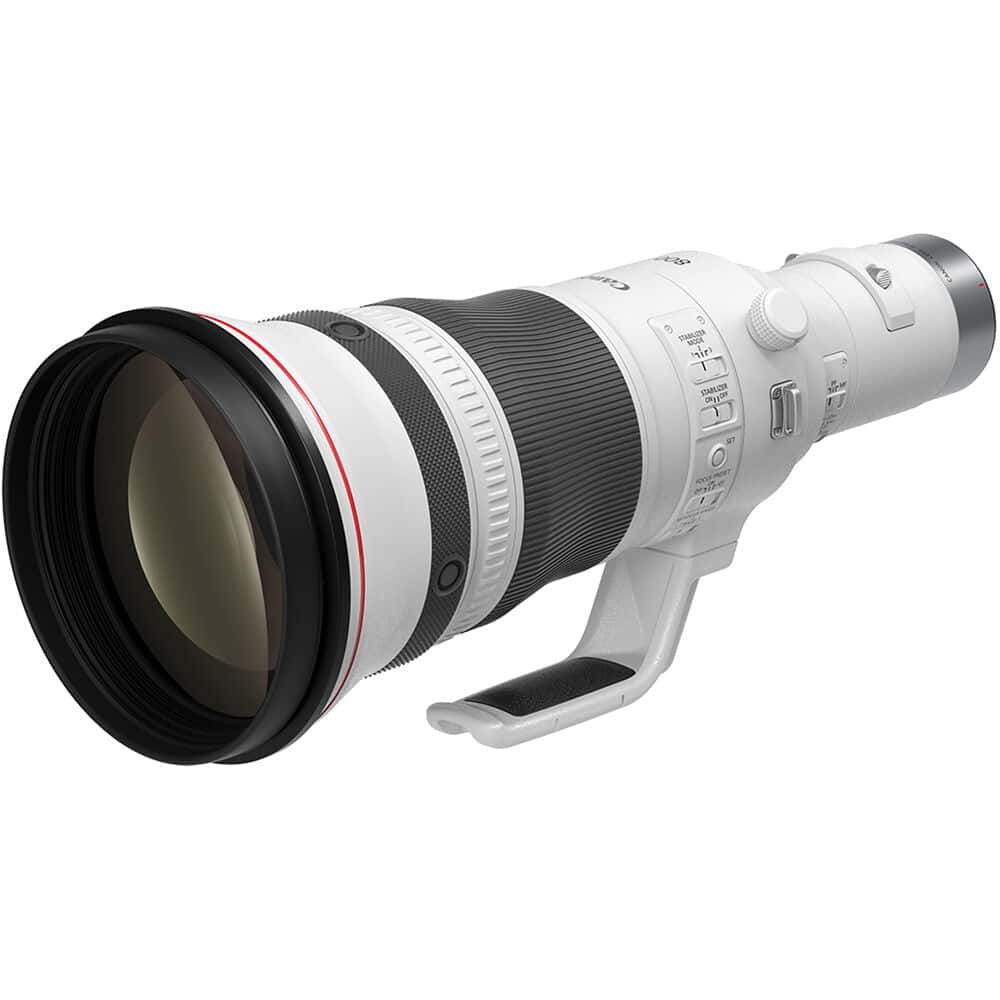
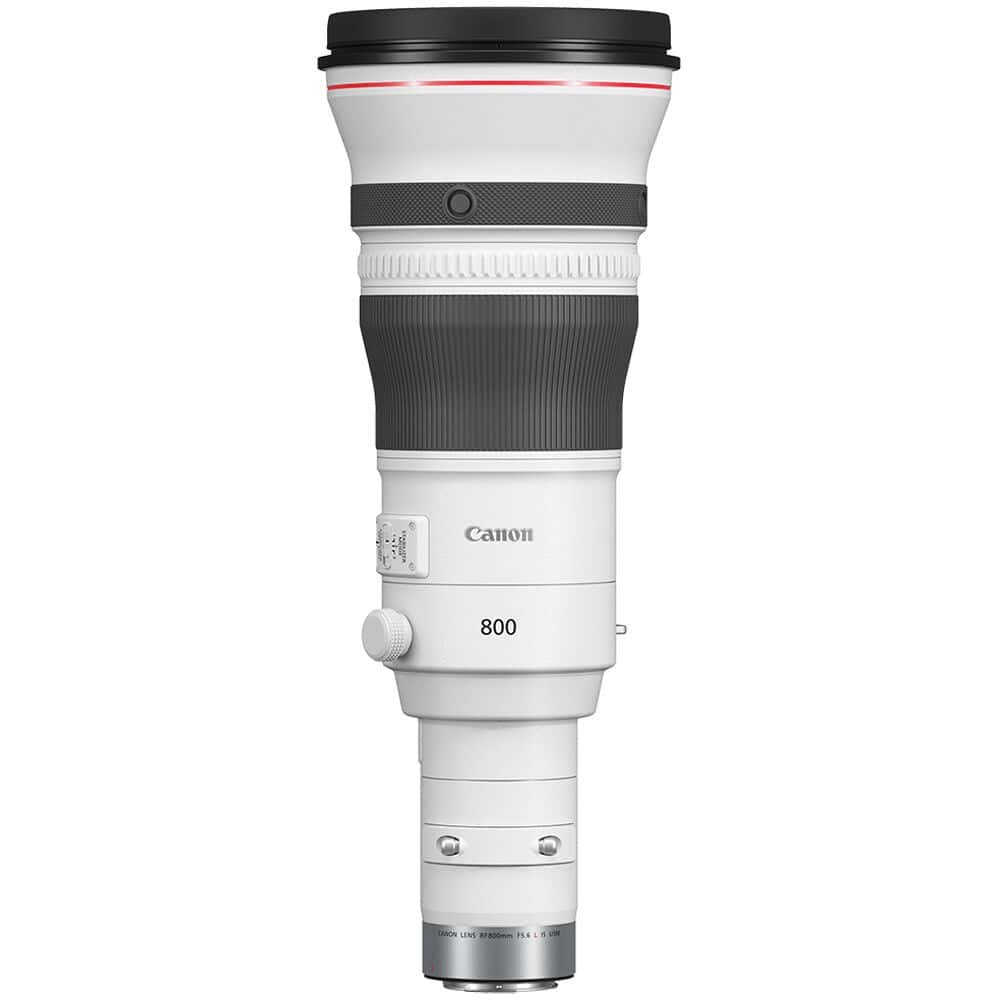
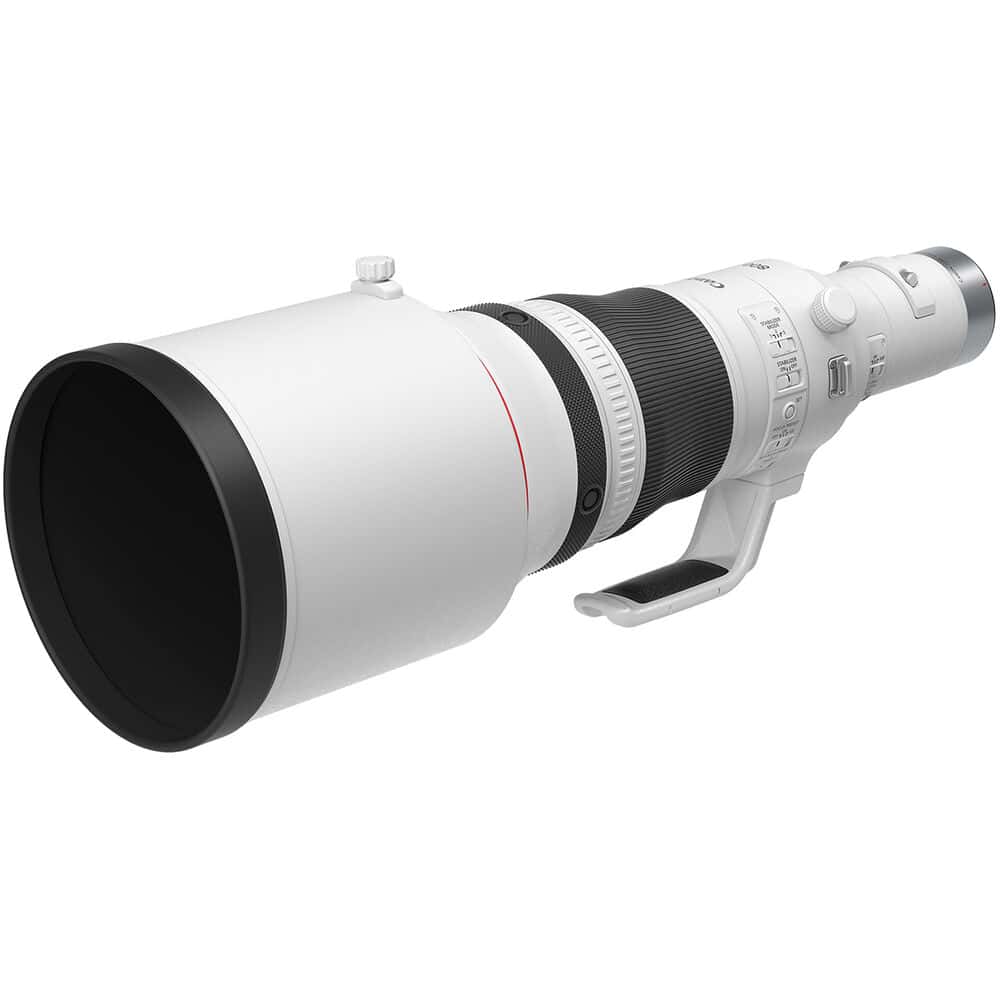
Let’s look at this lens closely and compare it to the RF 400mm f/2.8 L IS. The RF 400mm has 17 lens elements in 13 groups. The new Canon RF 800mm has 26 elements in 18 groups. So, where do these 9 new elements in 5 groups come from? Well, wouldn’t you know it, the Canon RF 2x teleconverter is comprised of, you guessed it, 9 elements in 5 groups.
The lens design diagrams of the RF 400mm and RF 800mm confirm the previous quote from Canon Asia. The front optical unit of the RF 800mm is identical to that of the RF 400mm. We can see the 2x magnification unit at the back of the new 800mm lens.
It’s worth pointing out that the front element in the magnification unit is a UD element. There are no UD elements that I’m aware of in the RF 2x teleconverter, which means that the magnification unit optics are not identical to those found in a standard RF 2x teleconverter. That’s a good thing, but is it a $5000 or $7000 good thing? I doubt it. But let’s continue on and look at some MTF charts.
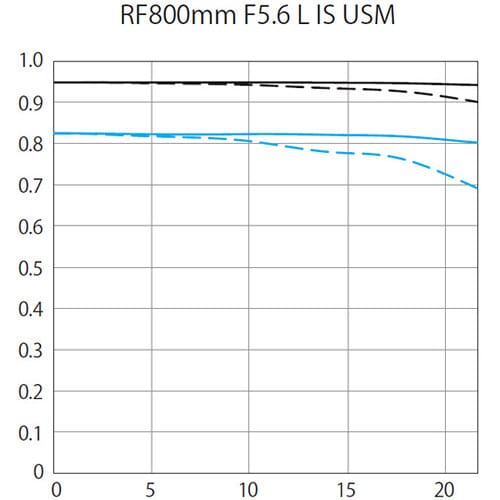
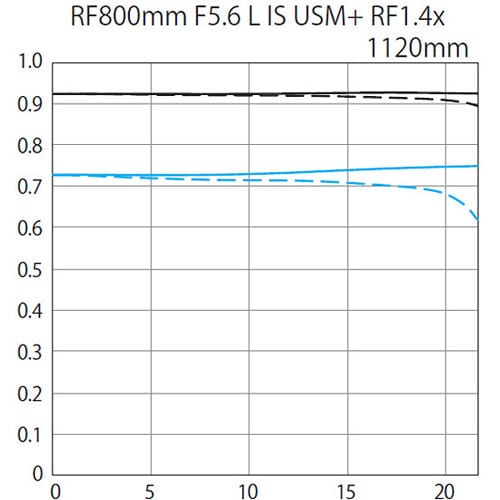
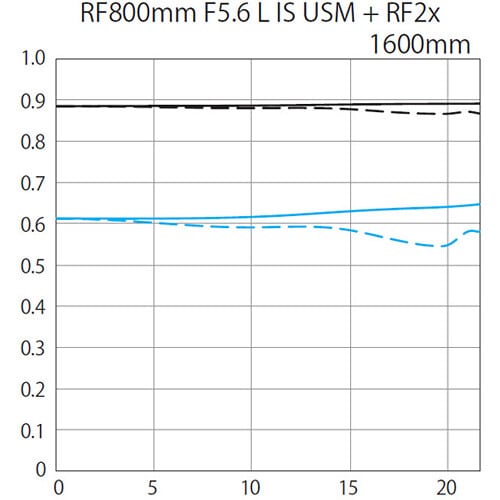
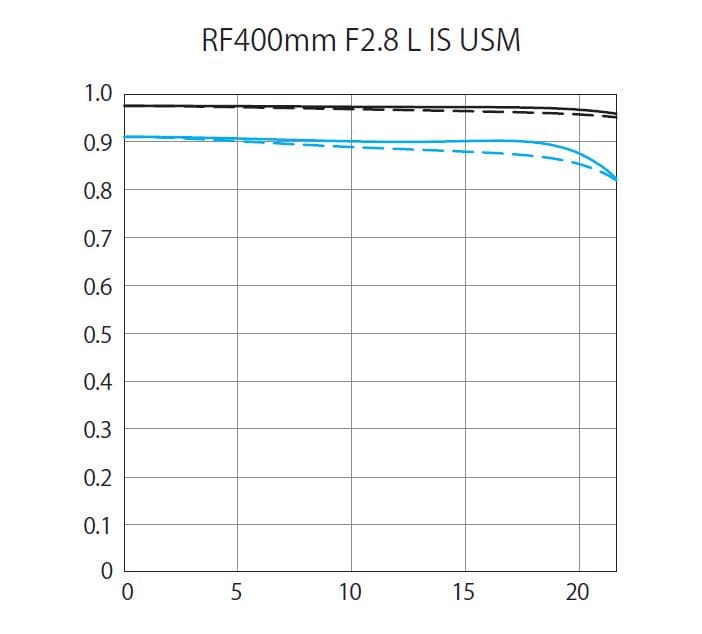

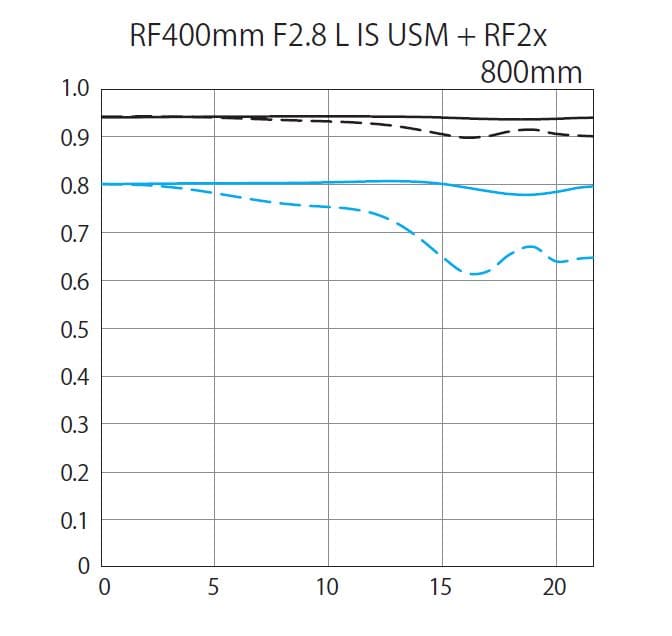
Above, we see all the MTF charts for the RF 800mm and the RF 400mm. Of particular note is that the bare 400mm is clearly sharper than the bare 800mm lens. Knowing how this lens has been designed, we shouldn’t be surprised about that, but given the $17,000 price tag, you’d be forgiven for hoping for a different result. A teleconverter, extender, doubler or “magnification unit” will always, no matter how you design it, magnify any imperfections in the lens groups in front of it. That is why we see image degradation when using teleconverters, and that’s why the RF 800mm will never be as sharp as the RF 400mm.
But what about comparisons with the RF 400mm and teleconverters? Well, for now, we should ignore the RF 400mm + 1.4x combination because its 560mm focal length doesn’t have an equivalent in these new lenses. We are concerned about the RF 400mm + 2x teleconverter and how it is compared to the bare RF 800mm lens. Looking at that direct comparison, we can see a slight improvement in edge-of-frame sharpness on the new 800mm, but not anything I would consider to be mind-blowing. Or maybe even noticeable in real-world usage.
If you buy the RF 400mm and a pair of RF teleconverters, you get a great 560mm f/4 lens and a very good 800mm f/5.6 lens. That focal length versatility is the reason that so many wildlife and sports photographers opt for the 400mm f/2.8 lens. If you buy the RF 800mm lens, you spend an additional $5000 and lose the options of 400mm and 560mm focal lengths and f/2.8 and f/4 apertures for low-light situations. All while gaining a marginal, perhaps unnoticeable gain in edge sharpness.
Are there any other reasons someone might opt for the RF 800mm? Well, for one, if you always shoot a 400mm with a 2x teleconverter on it, you might consider the new 800mm lens a step upwards and slightly more weather-sealed with one fewer place for water ingress in extreme wet conditions. Another reason is that you might want to add an RF teleconverter to the 800mm lens to reach 1120mm or 1600mm.
Can you produce sharp images at those focal lengths when combatting inevitable atmospheric degradation from rising heat? Not very often, no. Sharp images at anything approaching 1000mm are very difficult if the subject is at any great distance.
When considering this RF 800mm lens, there is another option we must also compare it to. The RF 600mm + 1.4x teleconverter gives you an 840mm f/5.6 lens. Users of the RF 600mm get 600mm f/4, 840mm f/5.6 and 1200mm f/8 options in their pocket. As you can see from the MTF charts above, the new RF 800mm is better at the edges of the frame than the RF 600mm + 1.4x combination, but again, I would not consider this a considerable margin. Is it really worth spending thousands of dollars more and losing that focal length flexibility?
My take would be no. If Canon had created brand new lens designs and incorporated built-in engageable-with-a-switch teleconverters, I’d be singing a different tune. But let’s not forget that even the RF 400mm and RF 600mm lenses are already EF lens designs with the EF to RF lens adapter simply built onto the end of it.
These lenses already seemed like something of a stopgap until “real” RF super-telephoto lenses were designed. Now Canon has taken that to new levels and launched to quickly bulk out the RF lens lineup and get the “1200mm lens” headlines. I’m sure they will sell to rental houses and government agencies, but they don’t make much practical sense for sports and wildlife photographers.
Canon RF 1200mm f/8 L IS
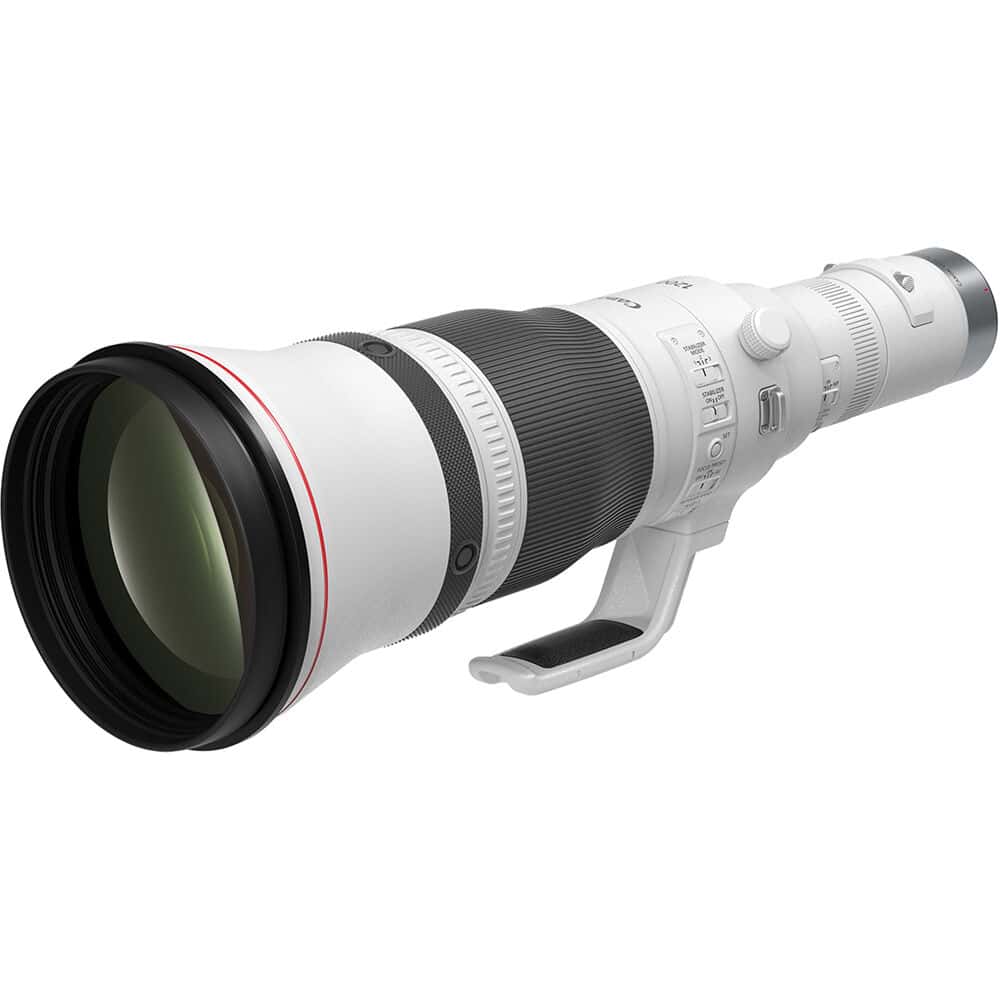
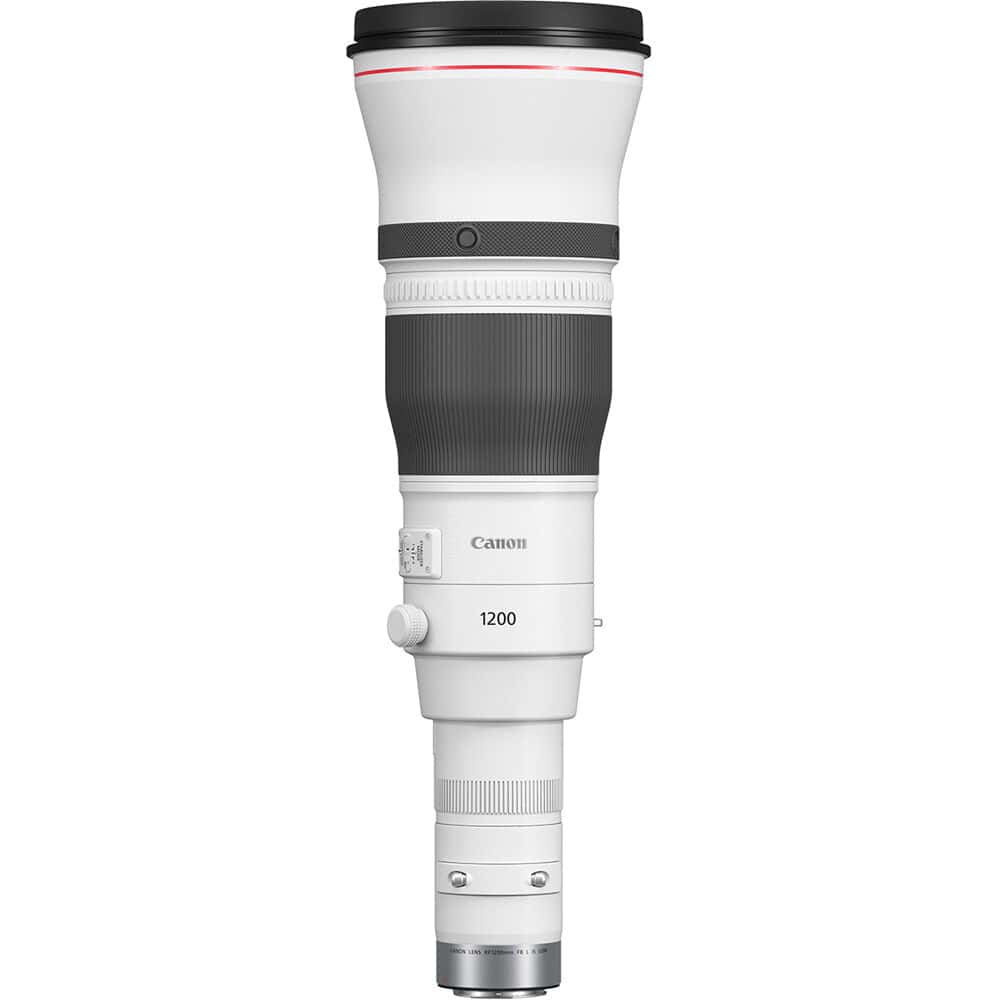
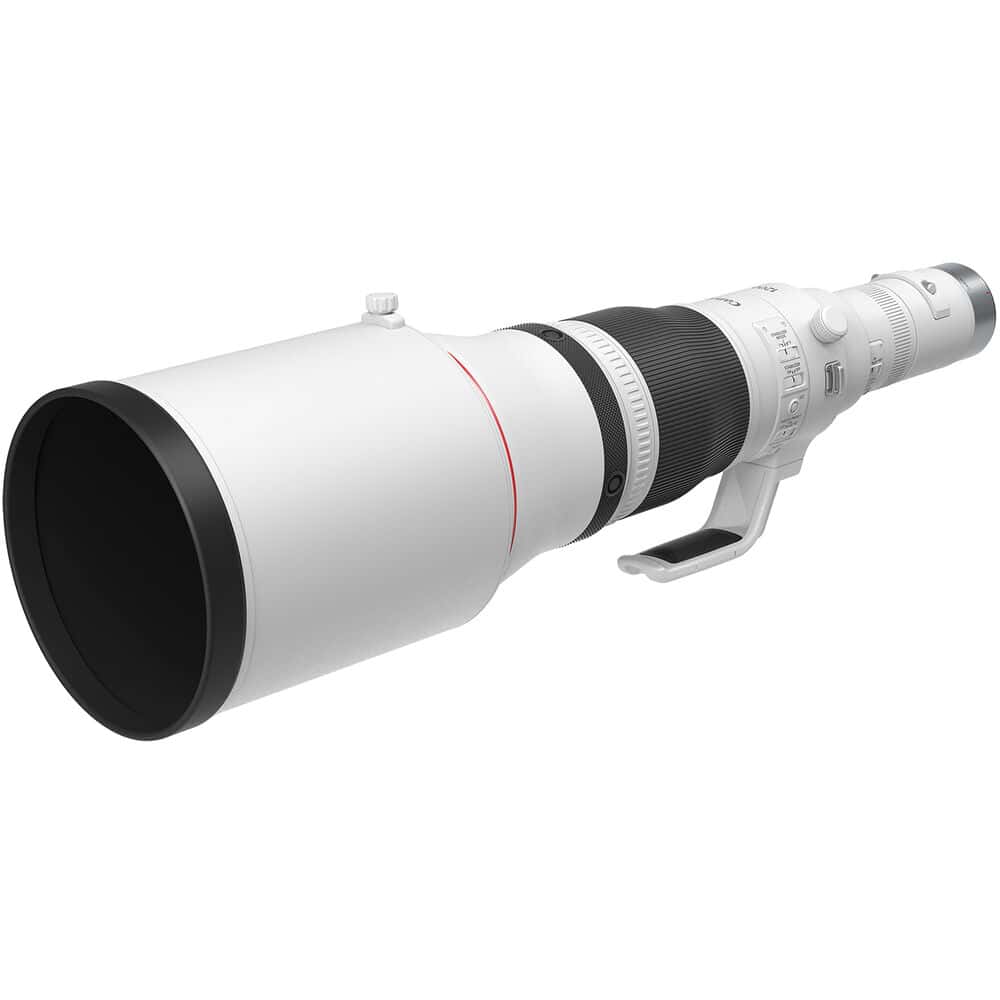
I’m sure that by now, you can probably guess that we will see the same thing and draw similar conclusions about the RF 1200mm f/8 L IS lens. Still, let’s take a look at the design and compare it to the RF 600mm on which it is based. Examining the lens specifications, we again see the same difference in lens groups and elements, with the RF 1200mm f/8 lens using 26 elements in 18 groups.
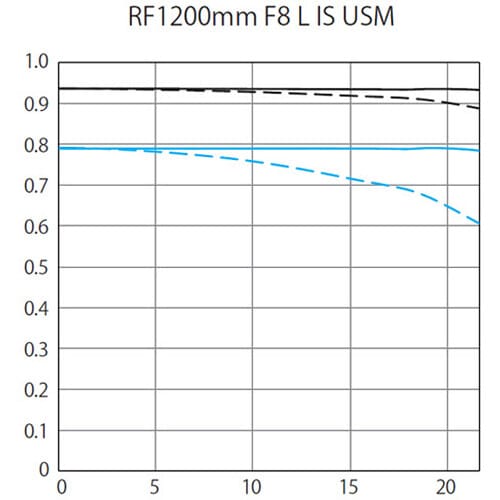

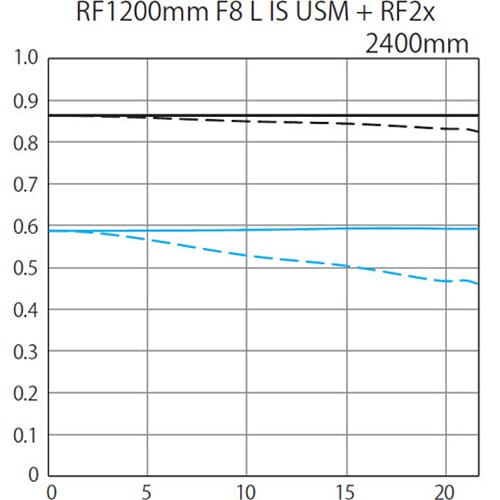
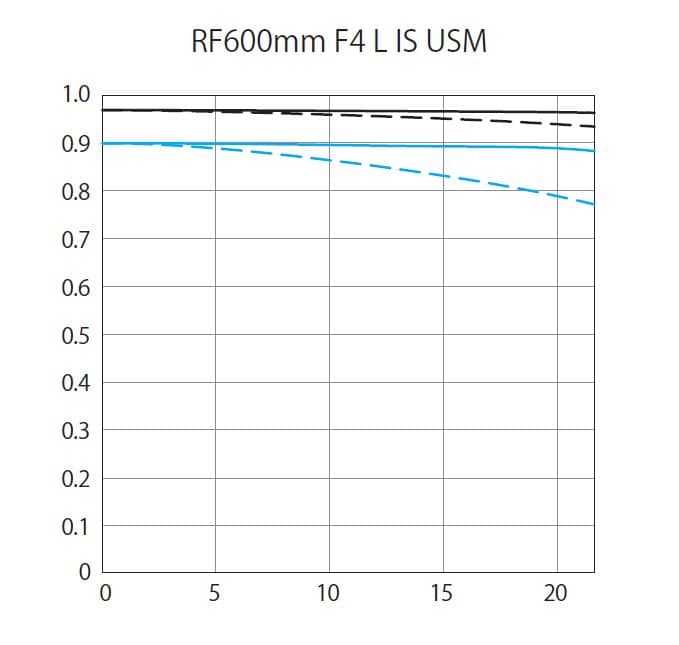


The MTF charts for the RF 1200mm lens show that just like the RF 800mm, the bare lens is not as sharp as the RF 600mm lens. Comparing the RF 1200mm to the RF 600mm + 2x teleconverter combination shows almost no difference at all. Marginal gains in the periphery of the image, but not by any amount that is likely to be instantly visible in real-world usage. If anything, the difference in the RF 1200mm is theoretically even less than that of the RF 800mm and 400mm comparison.
Choosing the RF 1200mm gives you the option of adding 1.4x and 2x RF teleconverters to get a 1680mm f/11 lens and a 2400mm f/16. Once again, though, I must stress how hard it is to get a sharp photo of any distant subject at anything approaching 1000mm, let alone 2000mm. Only in very rare and unpredictable atmospheric conditions would such focal lengths yield the tack-sharp image one would hope to get when spending $20,000. Outside of surveillance purposes and occasional special photojournalistic events (royal weddings etc.) I don’t see much practical use for this lens.
What’s Next from Canon?
All in all, this was an odd product launch for Canon. Many Canon RF wildlife photographers were, and still are, hoping for an RF 500mm f/4 DO lens to materialise. Or any of the other myriad Diffractive Optics super-telephoto designs that have been patented in the past few years.
Nikon’s New Z 800mm Lens – A Problem For Canon

Just as Nikon’s Z9 is a problem for Canon, so it is their latest super-telephoto lens launch. The Nikon Nikkor Z 800mm f/6.3 VR lens followed Canon’s RF lens announcement two weeks later. Although the Nikon 800mm lens offers a maximum aperture of 1/3 of a stop less than Canon’s, the Nikon lens is considerably less than half the Canon RF 800mm lens price. The Nikon 800mm uses phase fresnel lens elements – the same idea as Canon’s Diffractive Optics technology – to deliver a lens that is nearly 2lbs lighter than the Canon RF 800mm.
Where Canon’s new 800mm lens was met with ambivalence and sometimes laughter online, Nikon’s 800mm has been hailed as “revolutionary” in its design and $6500 price point. As many have pointed out, you could buy the Nikon 800mm, and a Nikon Z9 for less than the Canon 800mm and still have money to spare. ‘
Judging by the comments I have seen, many wildlife photography fans consider Nikon’s 800mm lens reason enough to switch brand allegiance. I don’t blame them. A professional-grade 800mm for just $6500 is entirely unheard of in this industry. Where many amateurs and even pros could never imagine spending $17,000 on an 800mm lens, a $6500 lens is an entirely different discussion.









